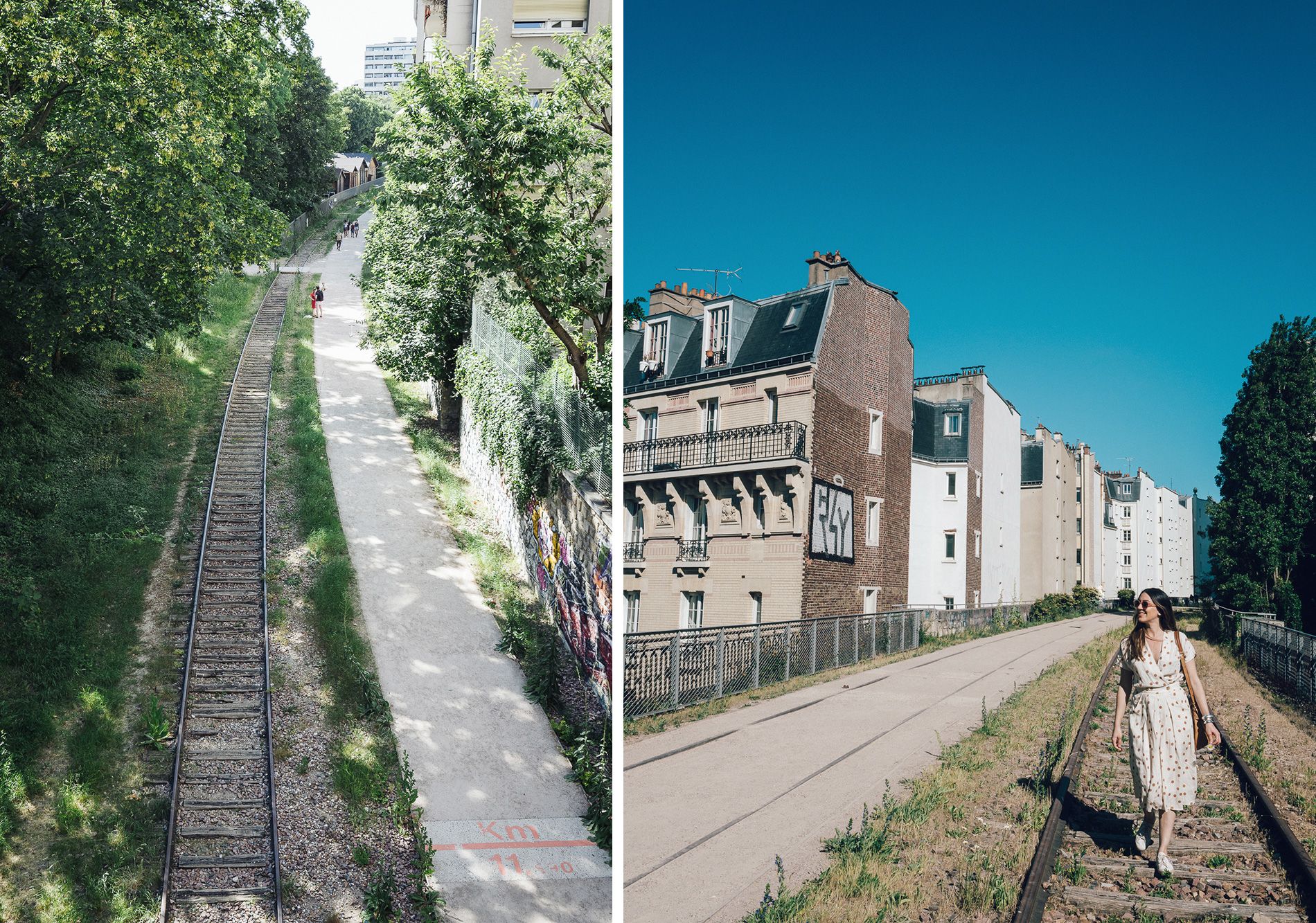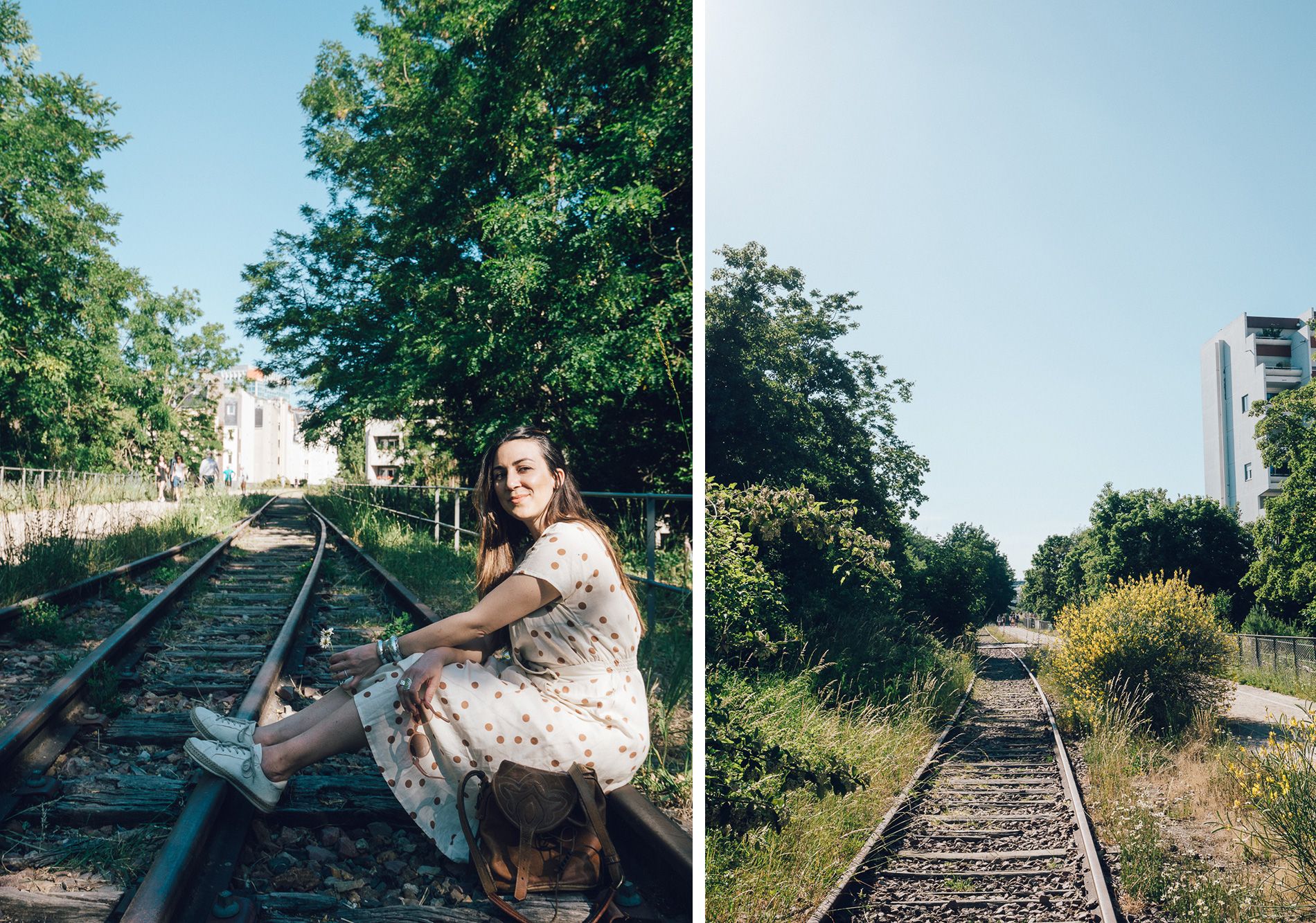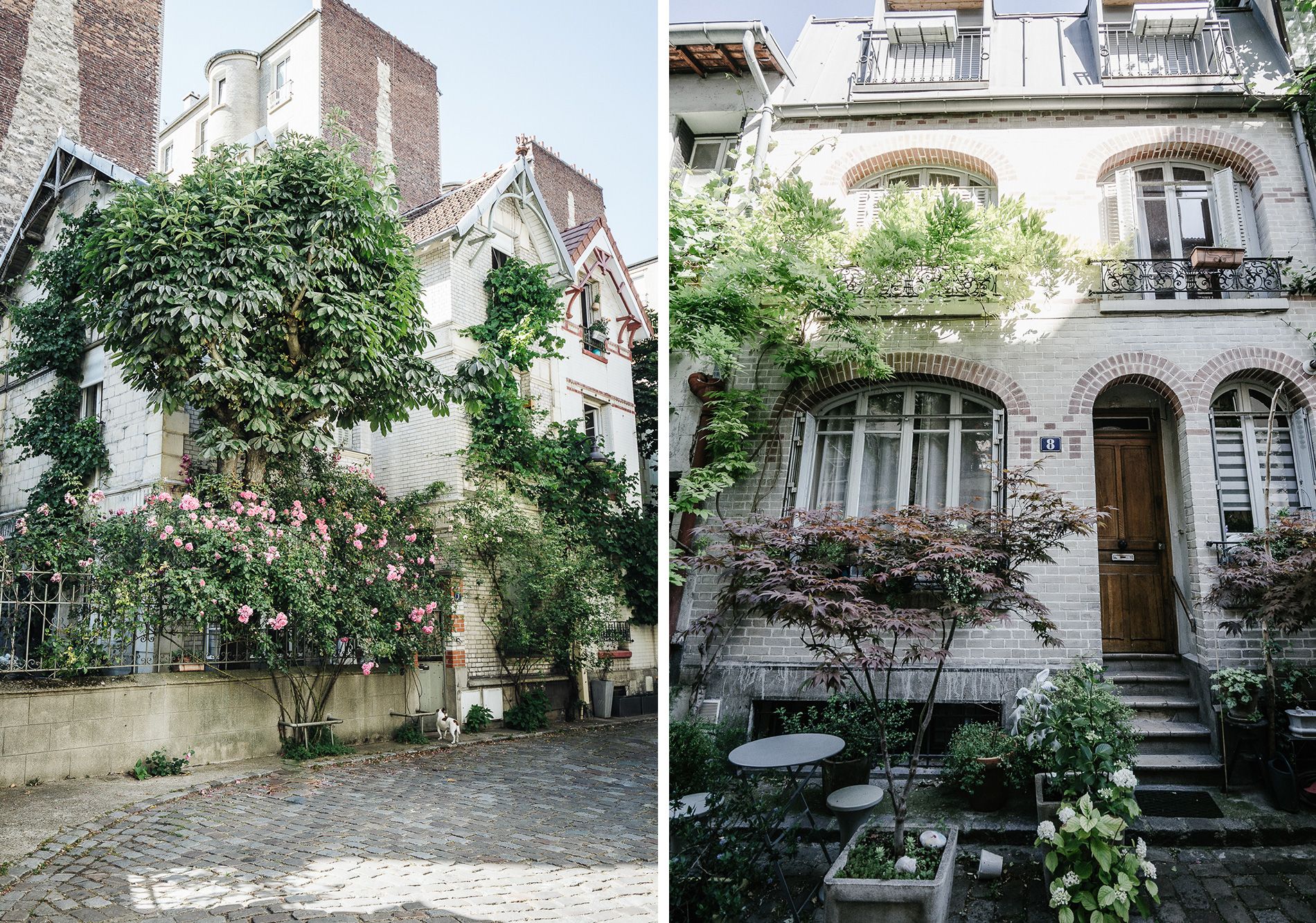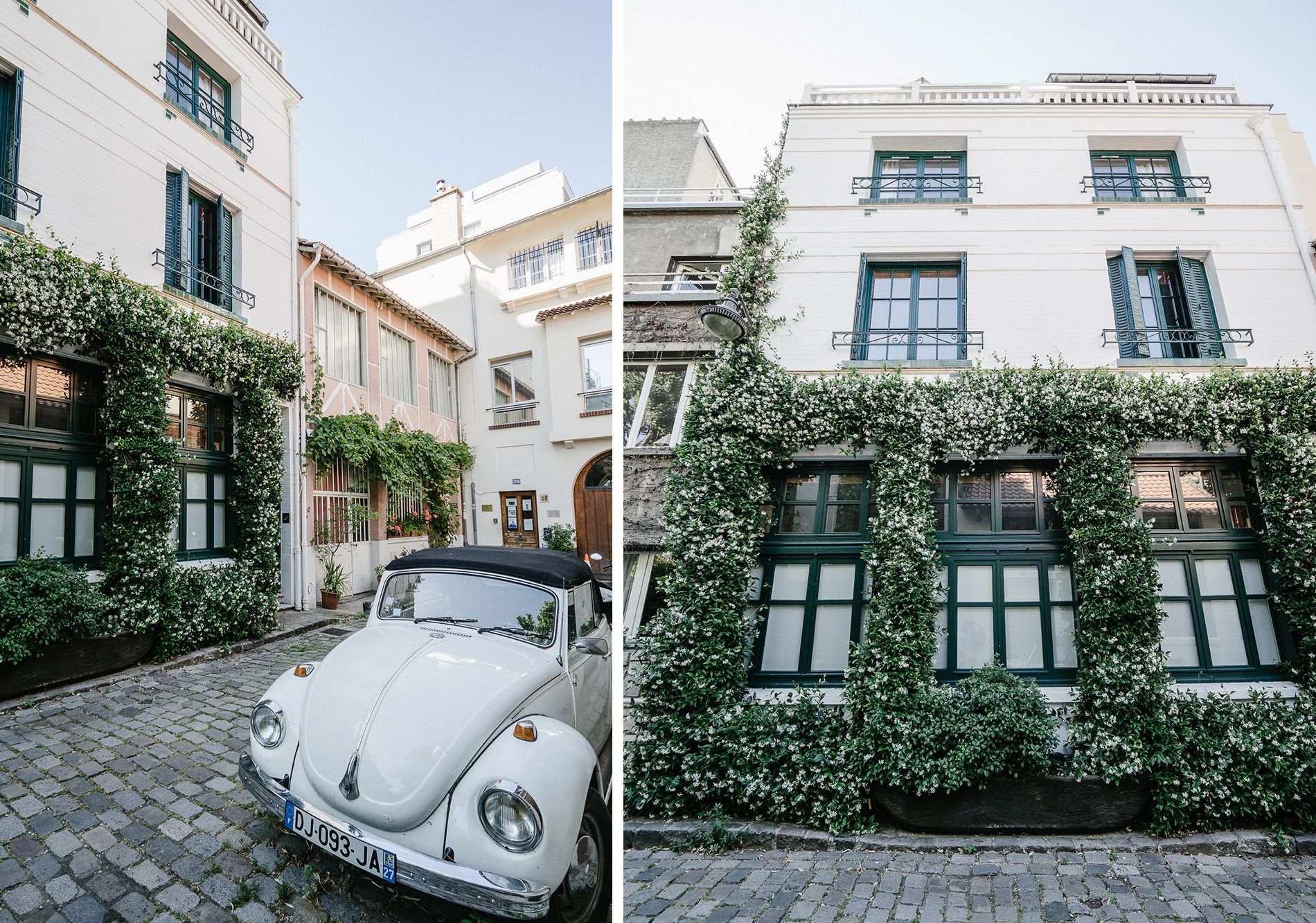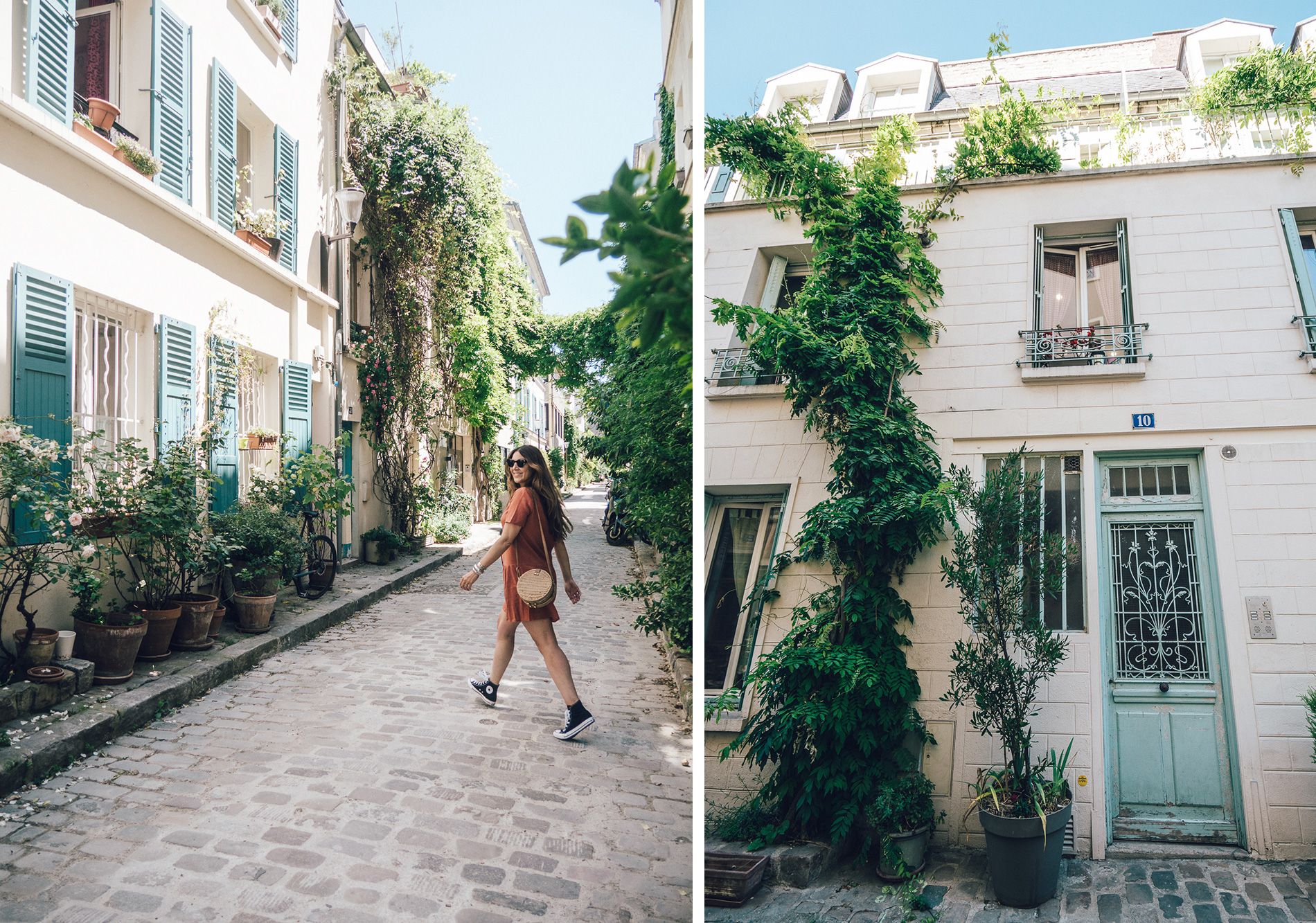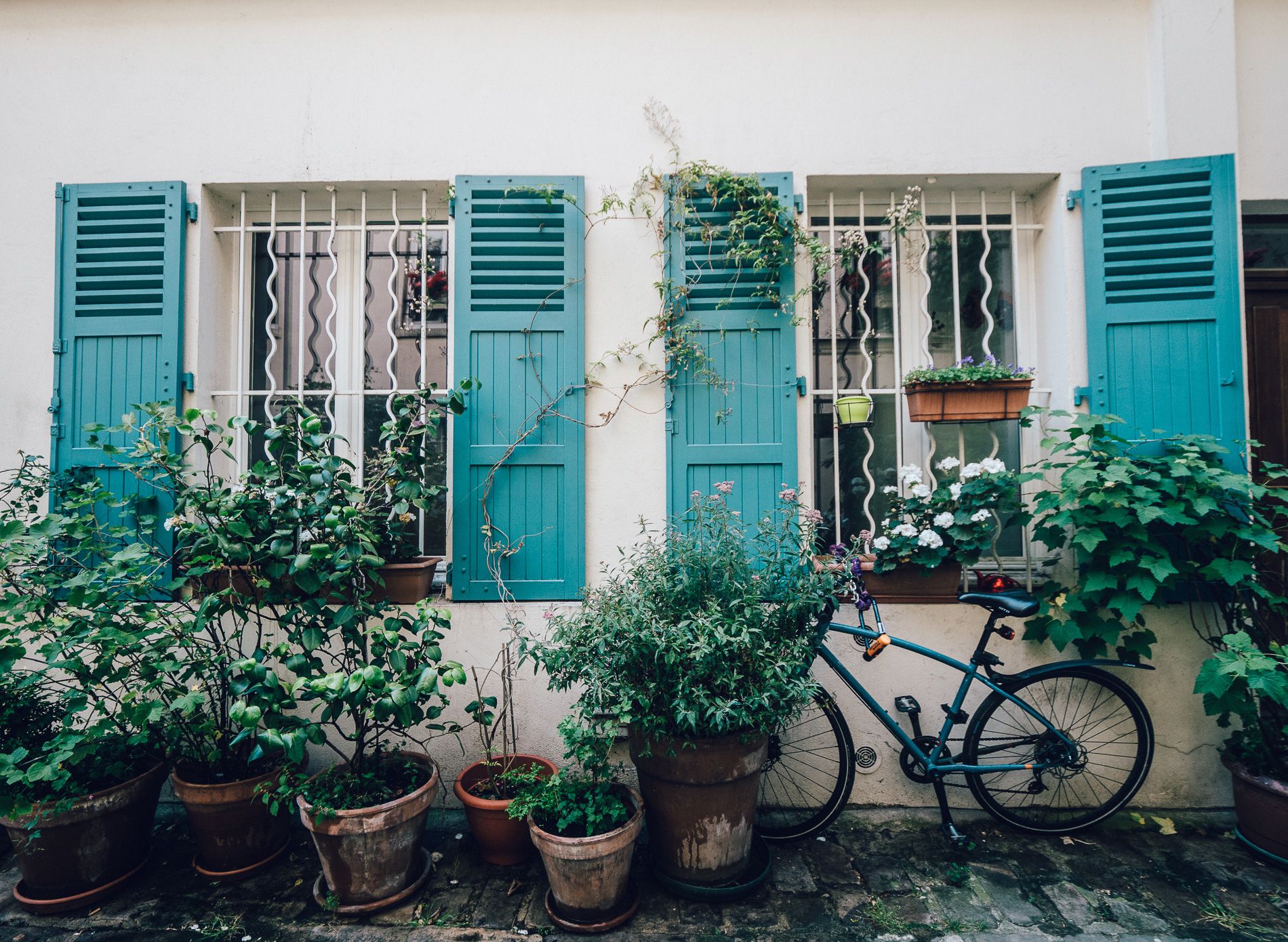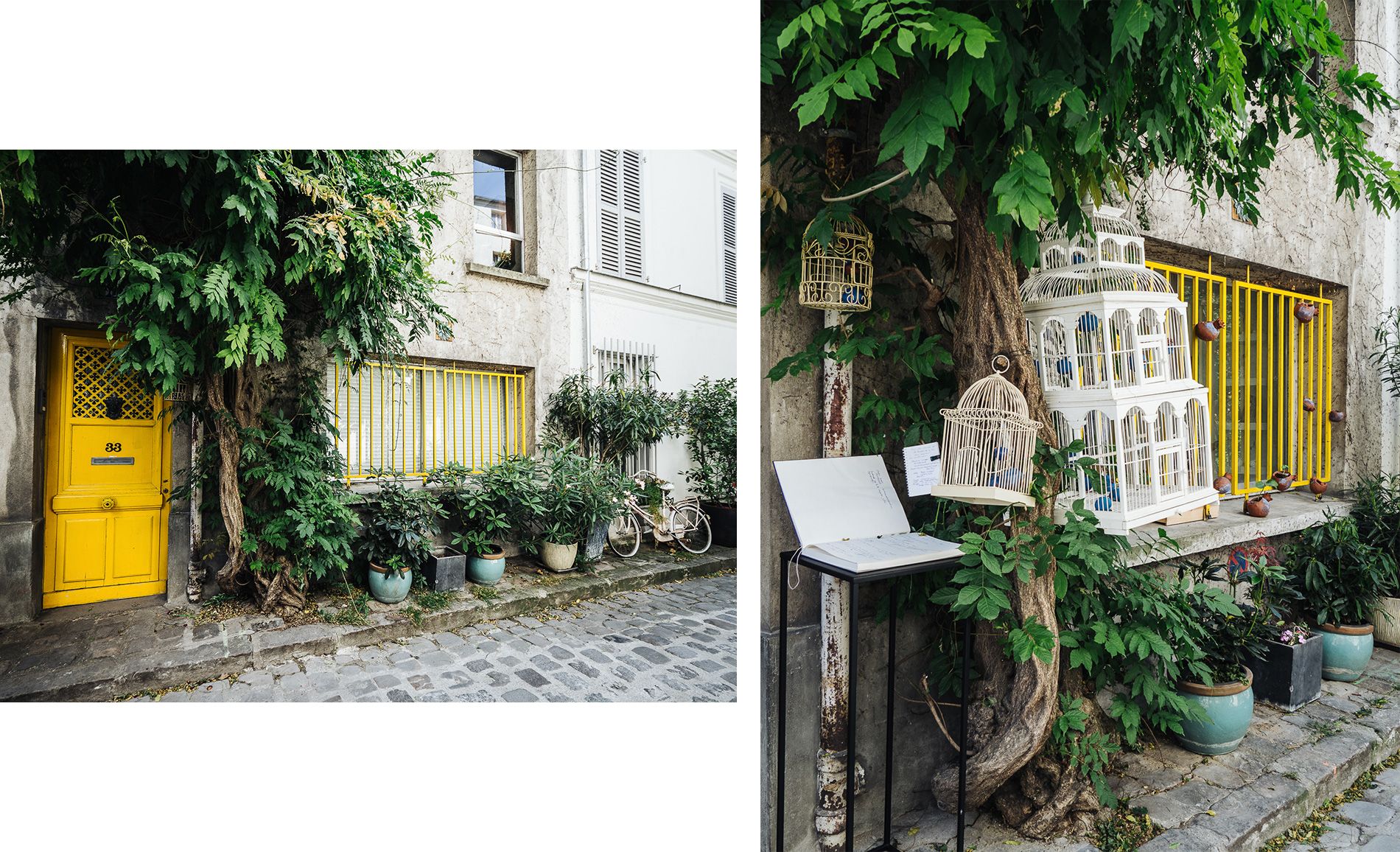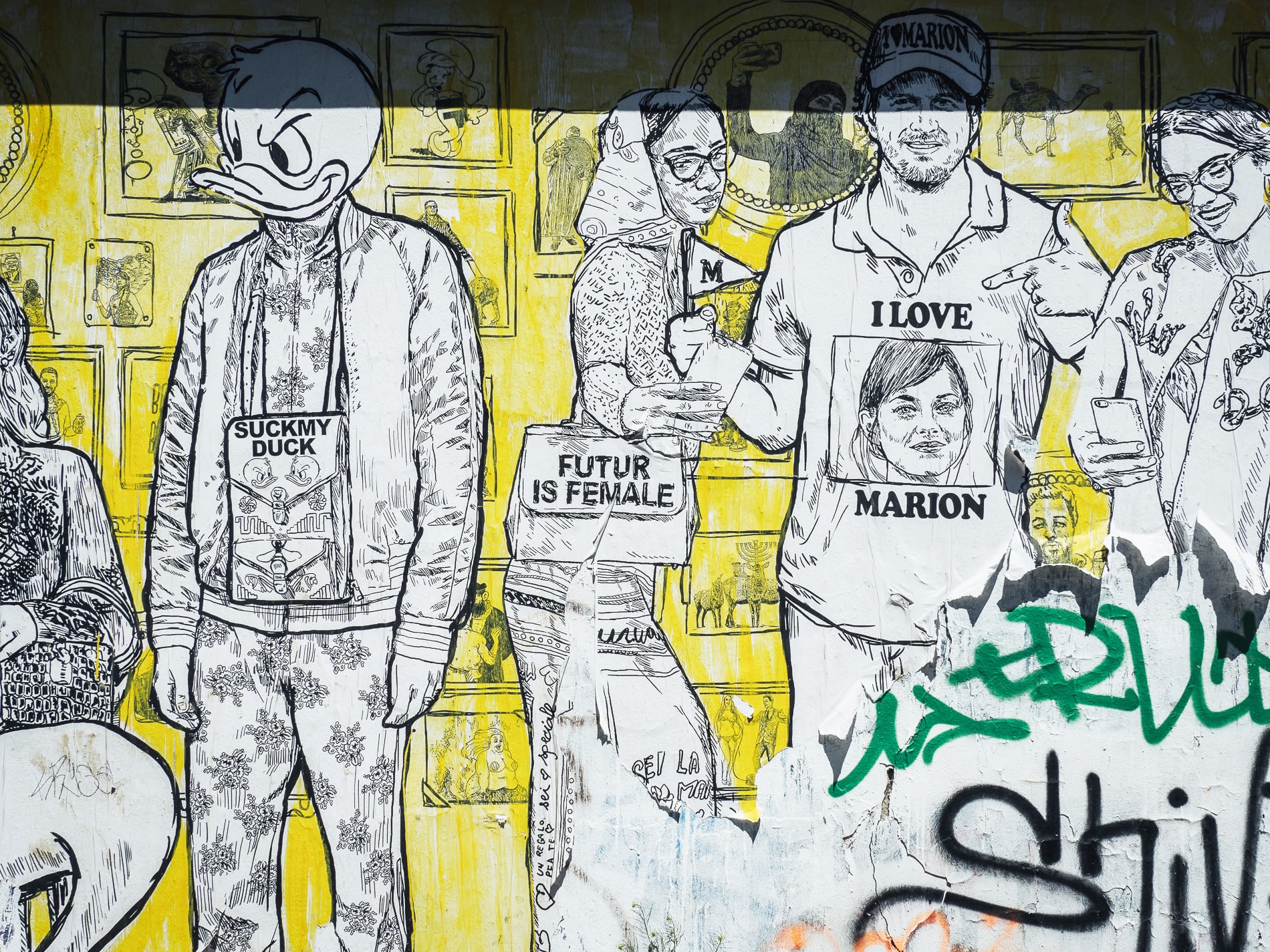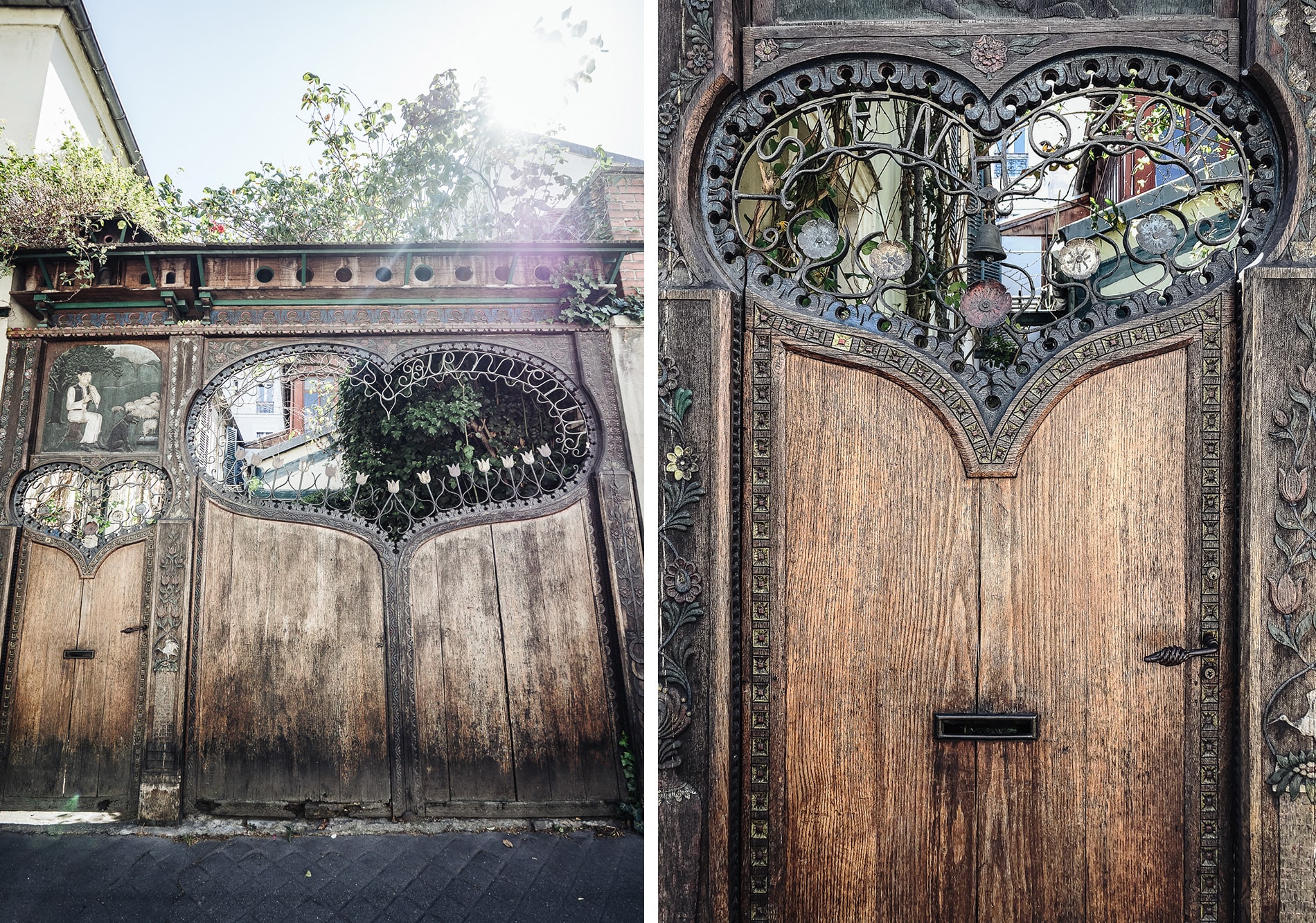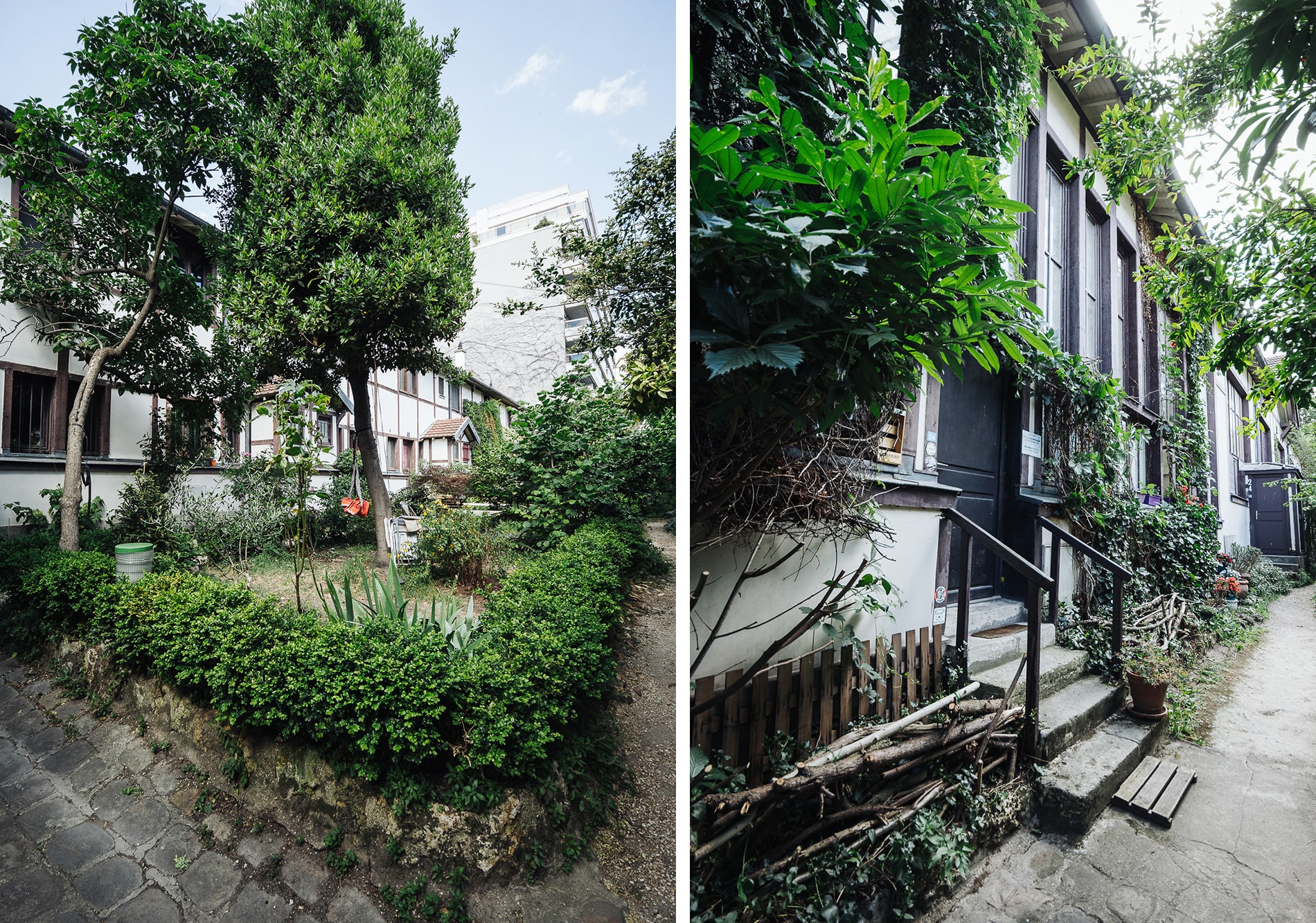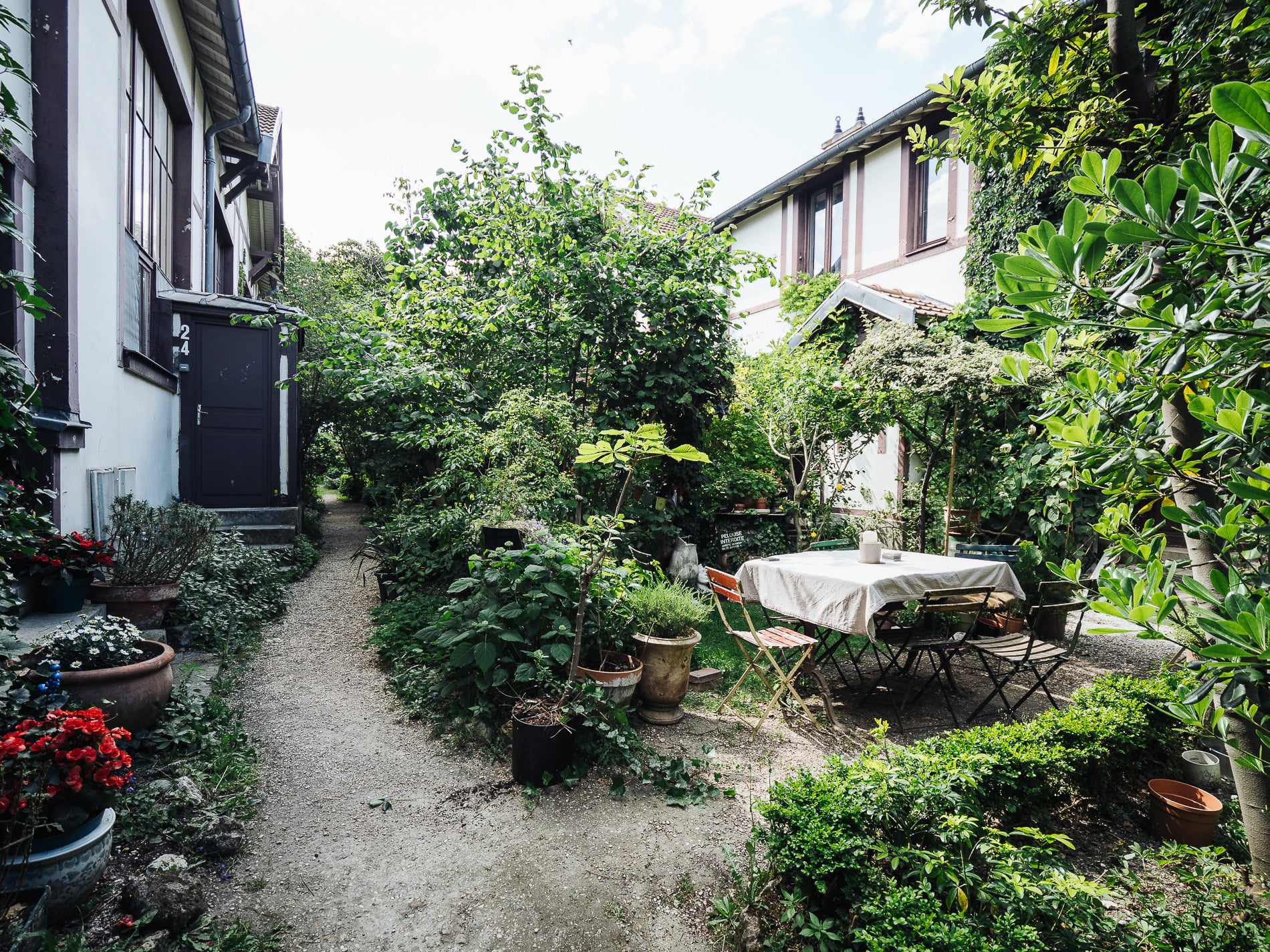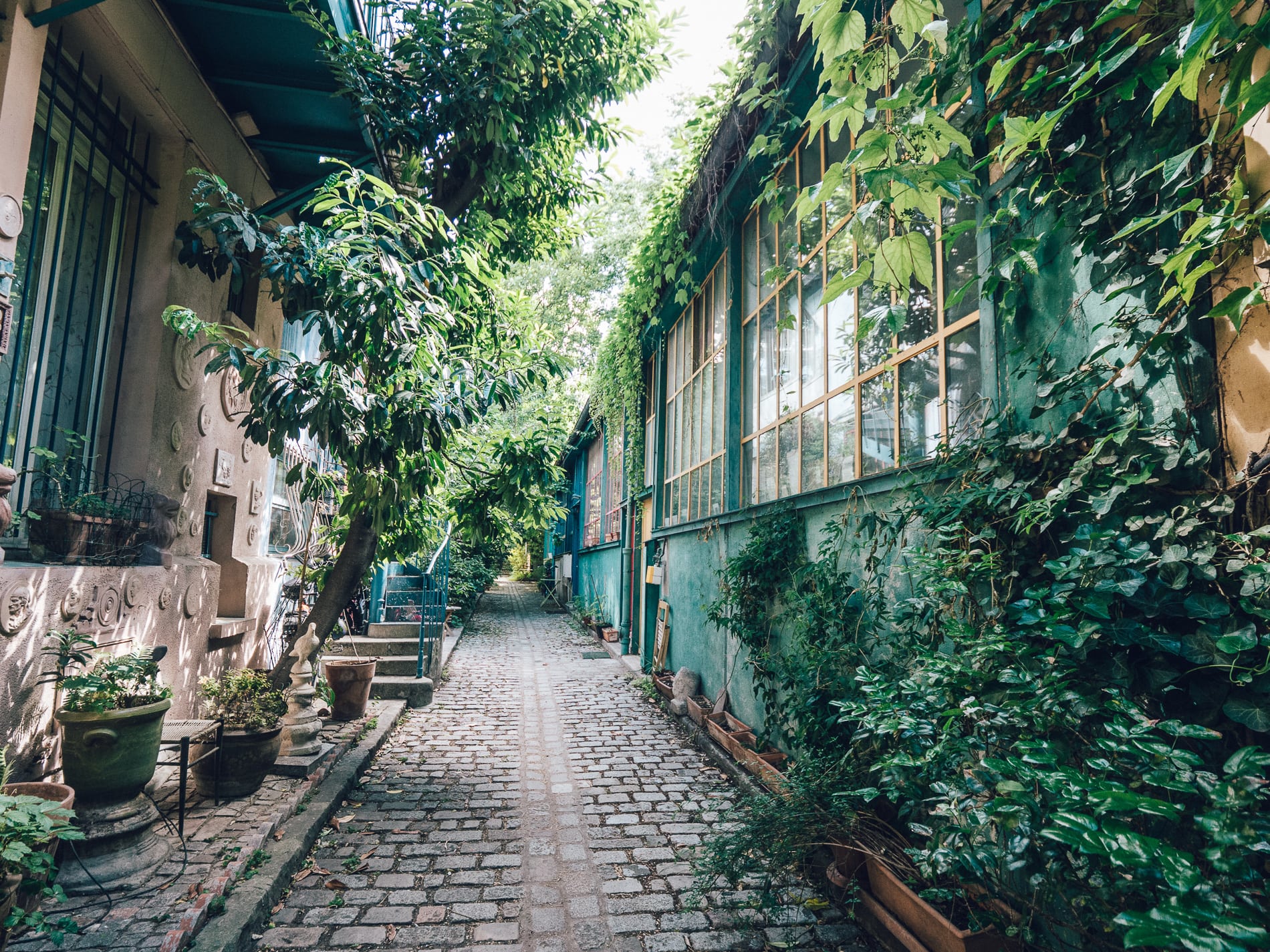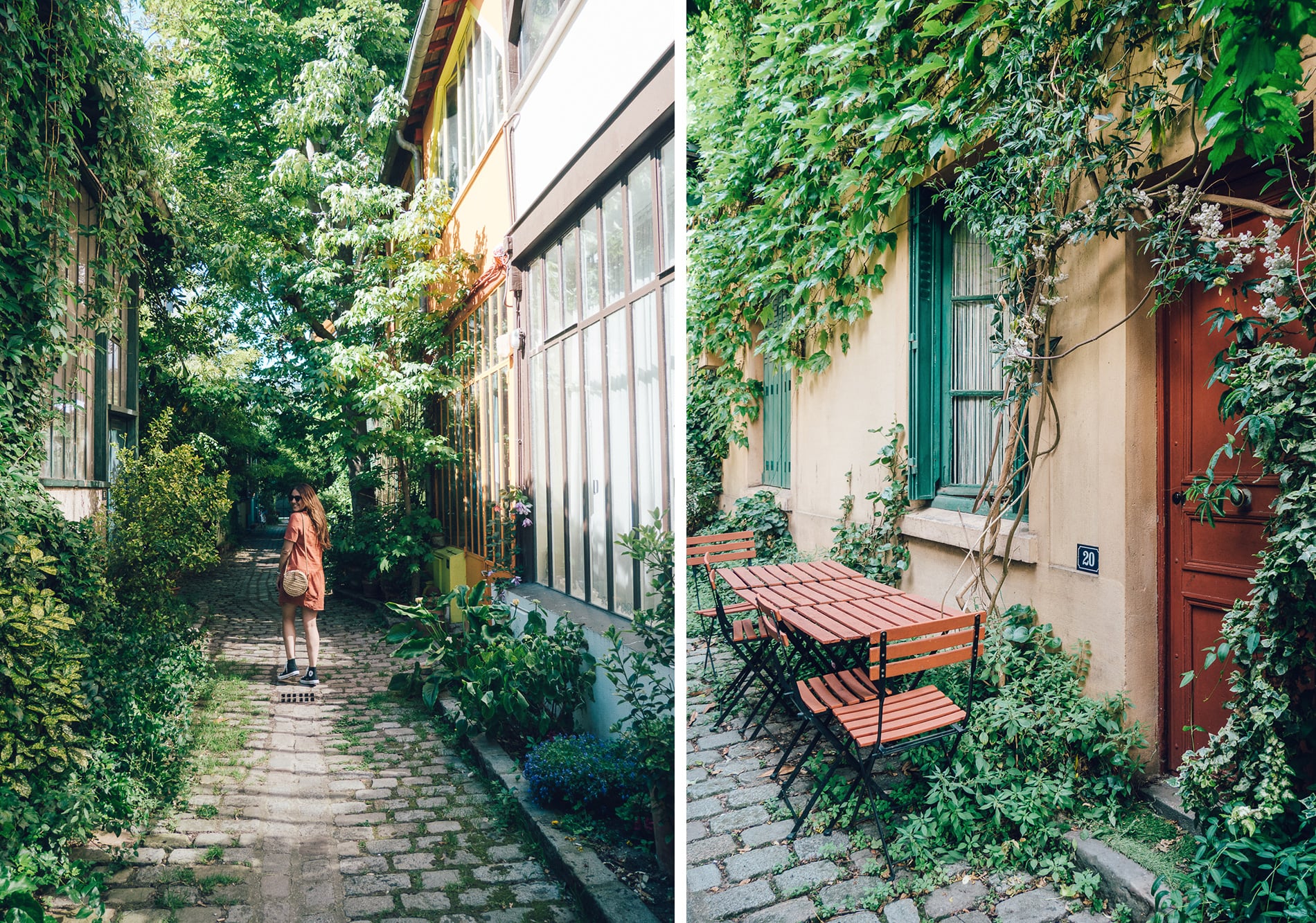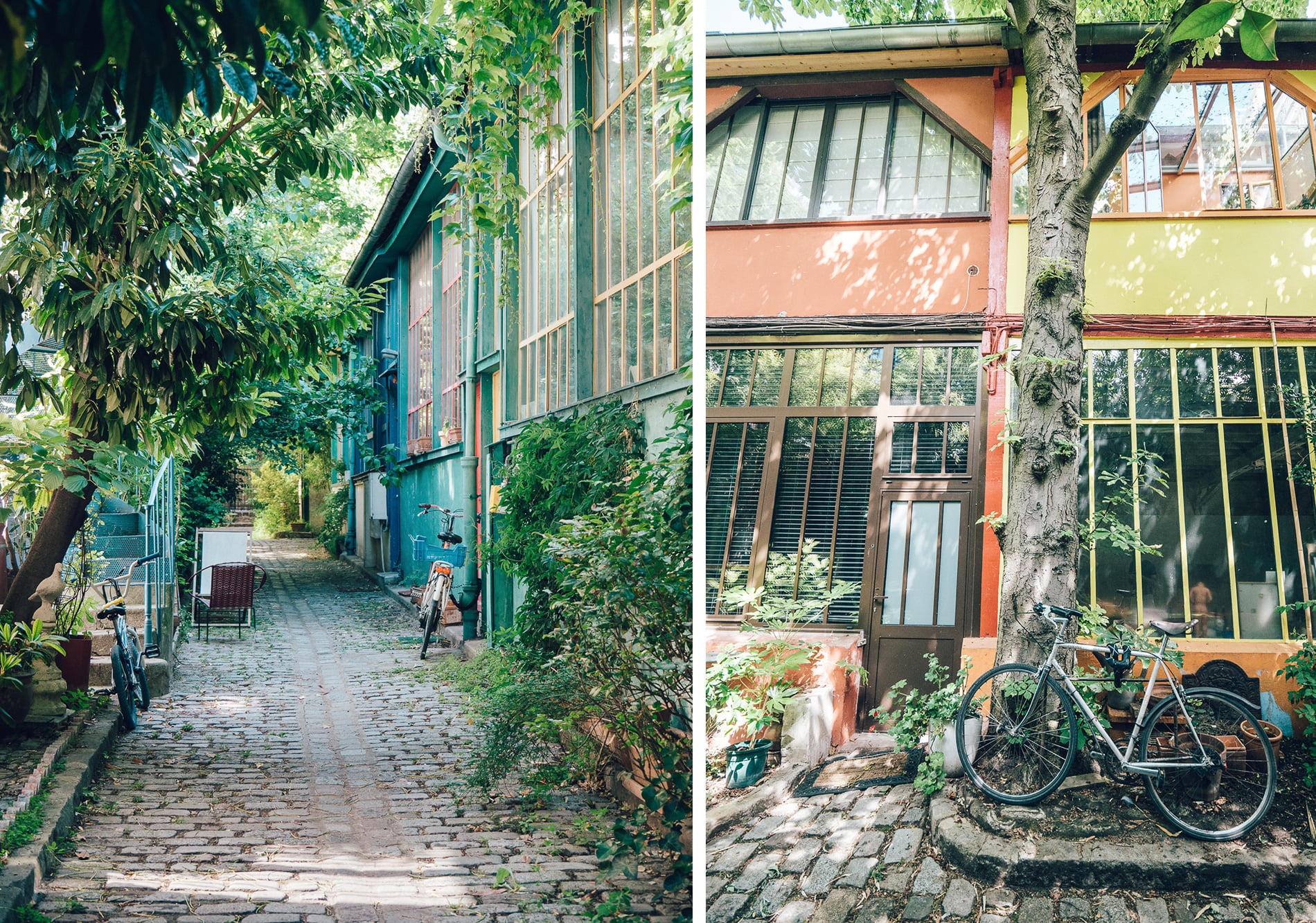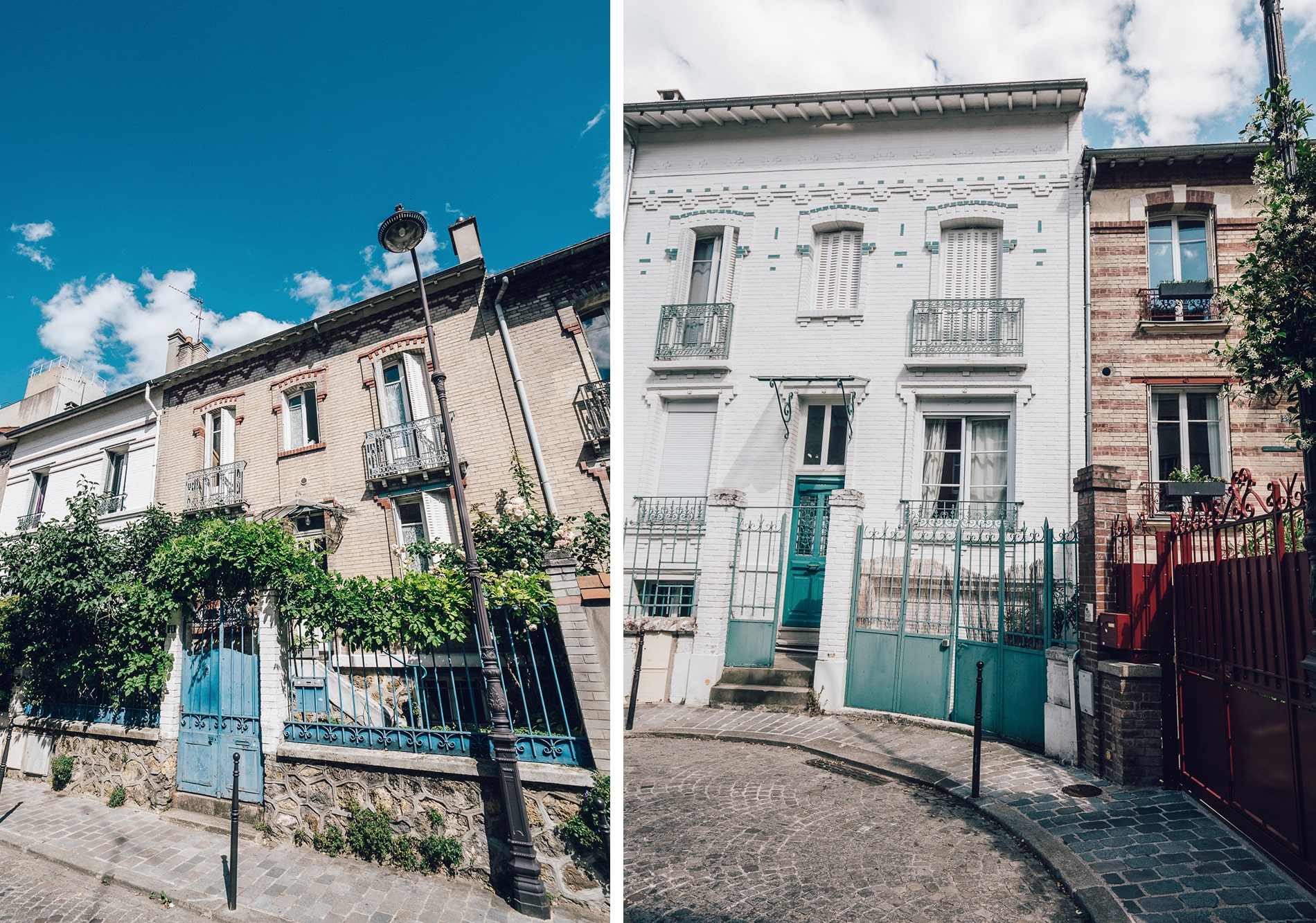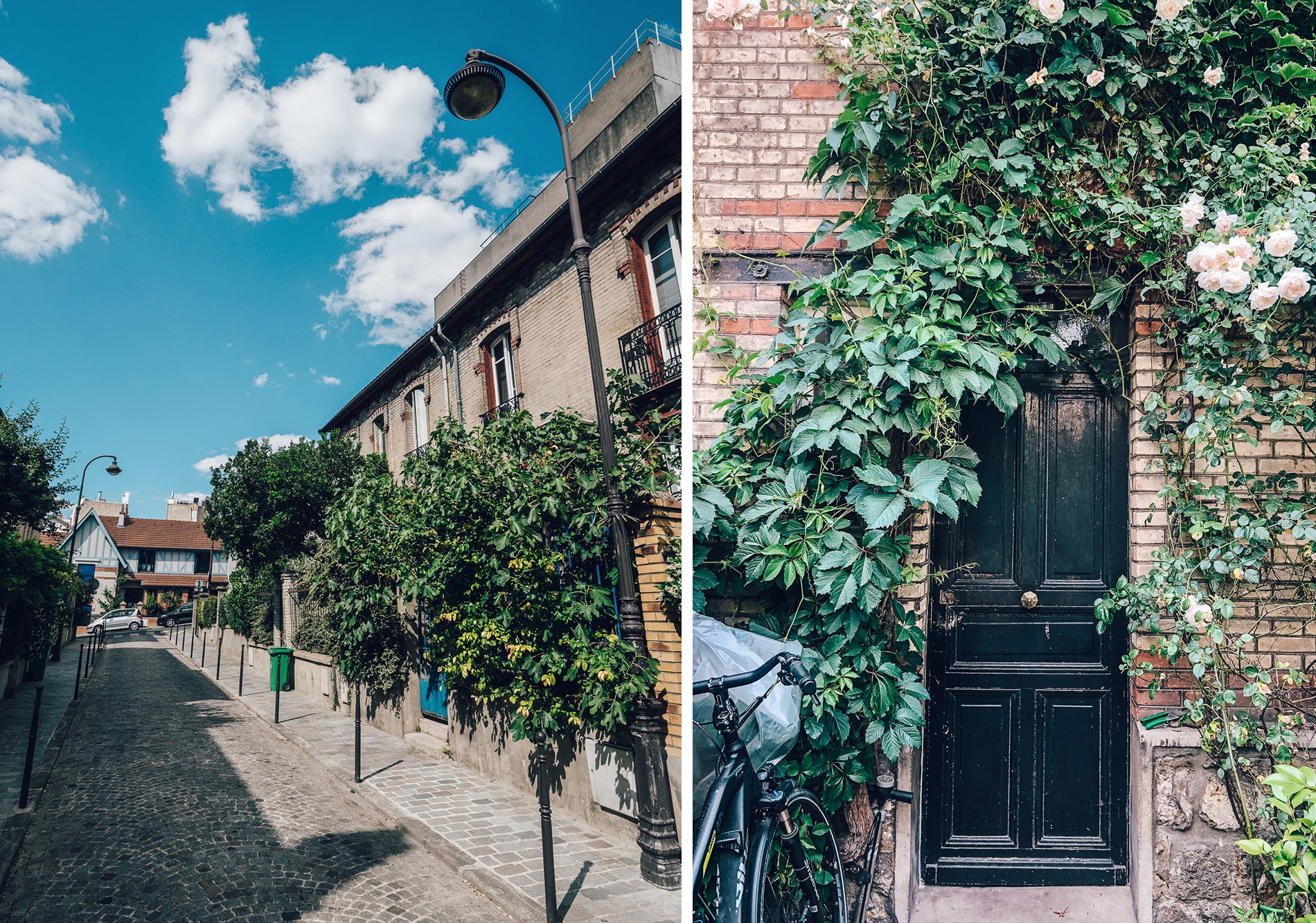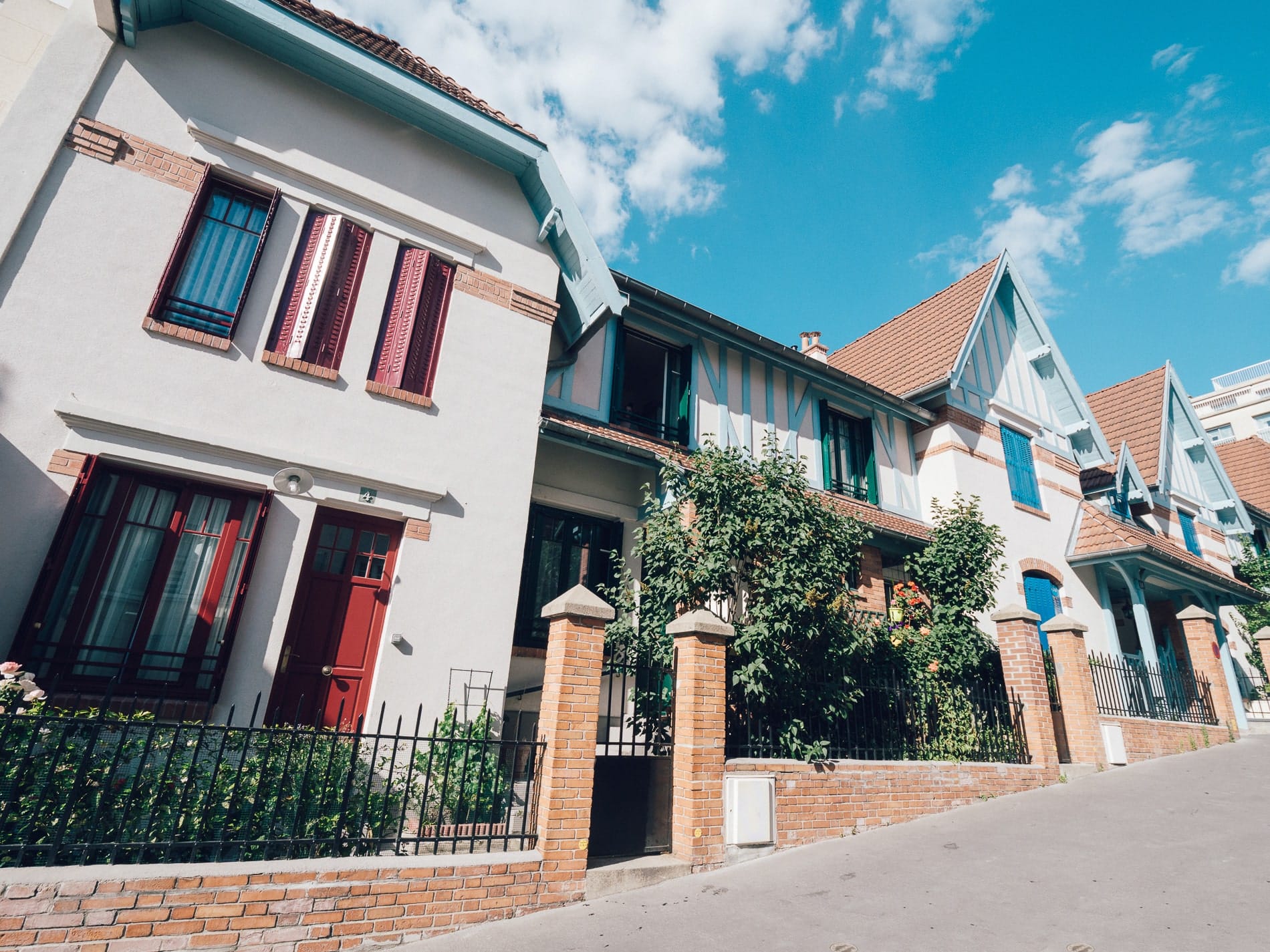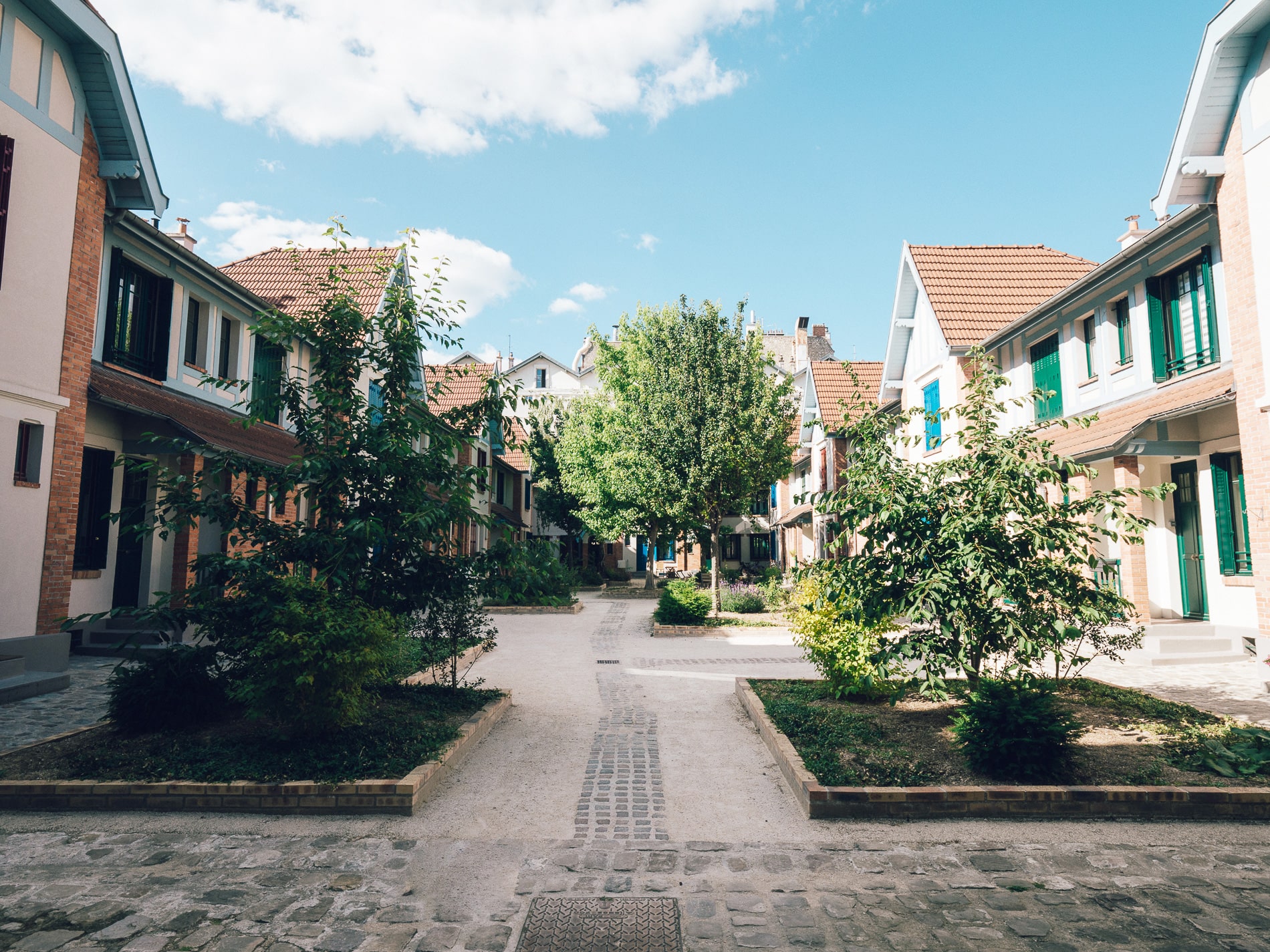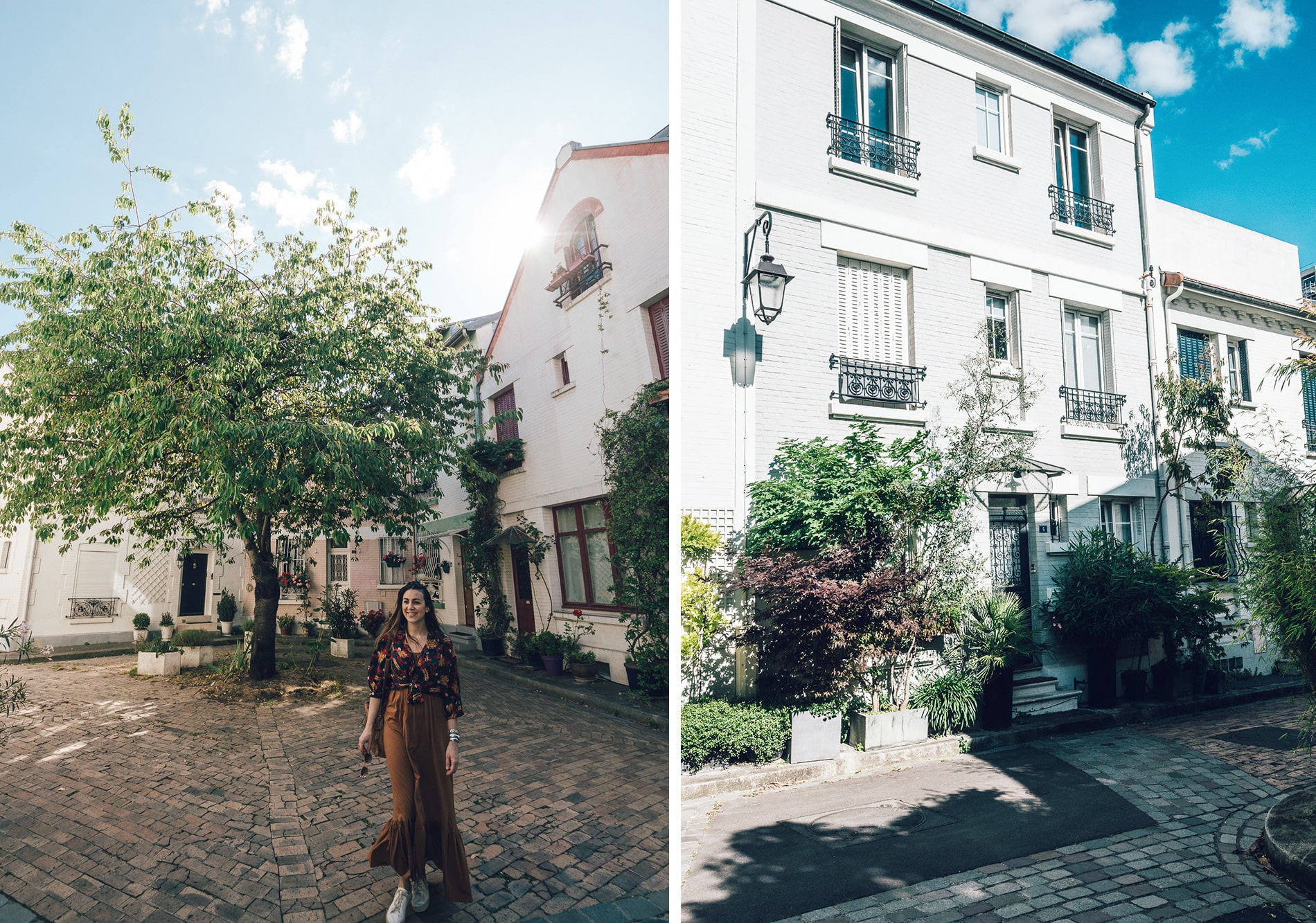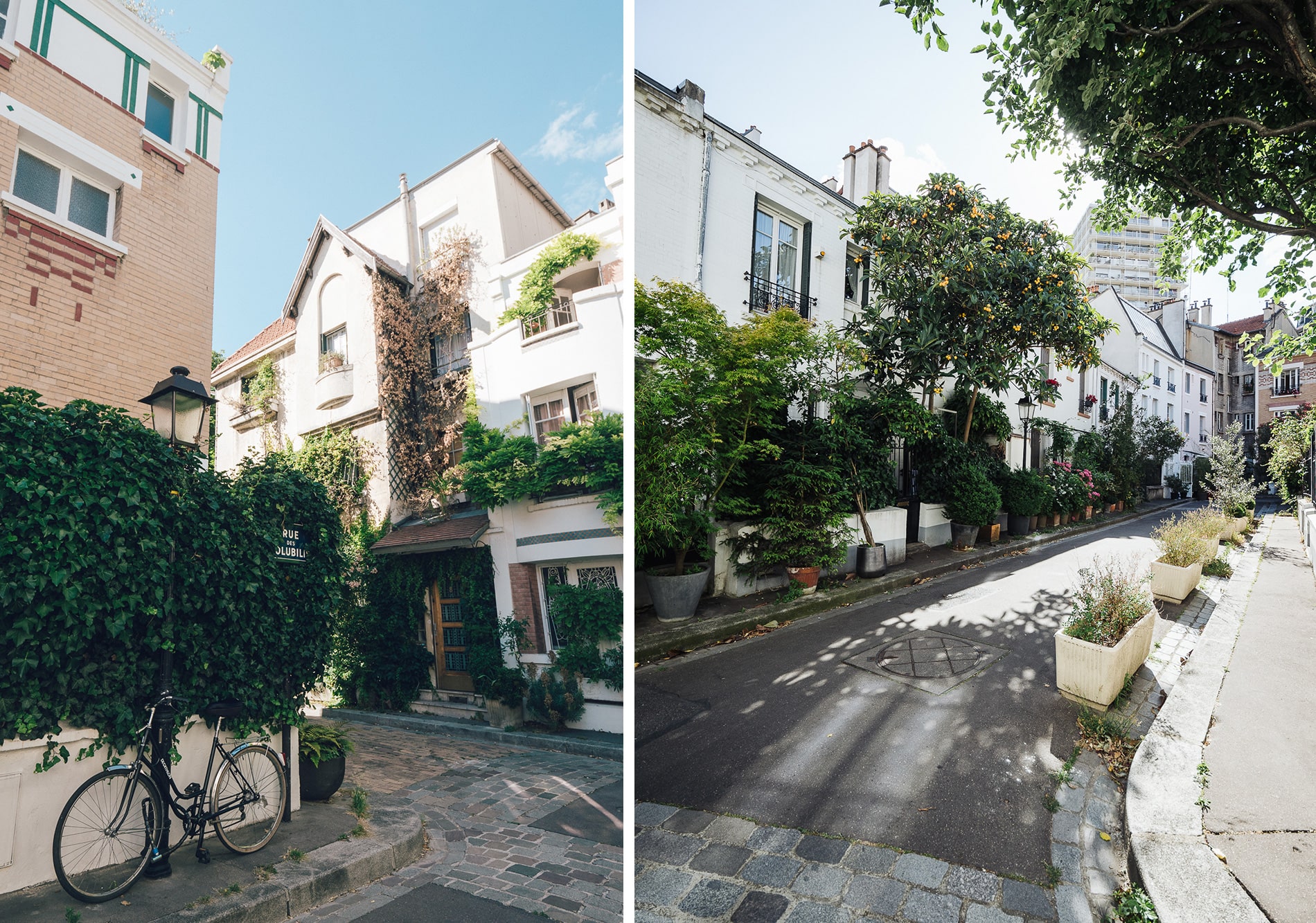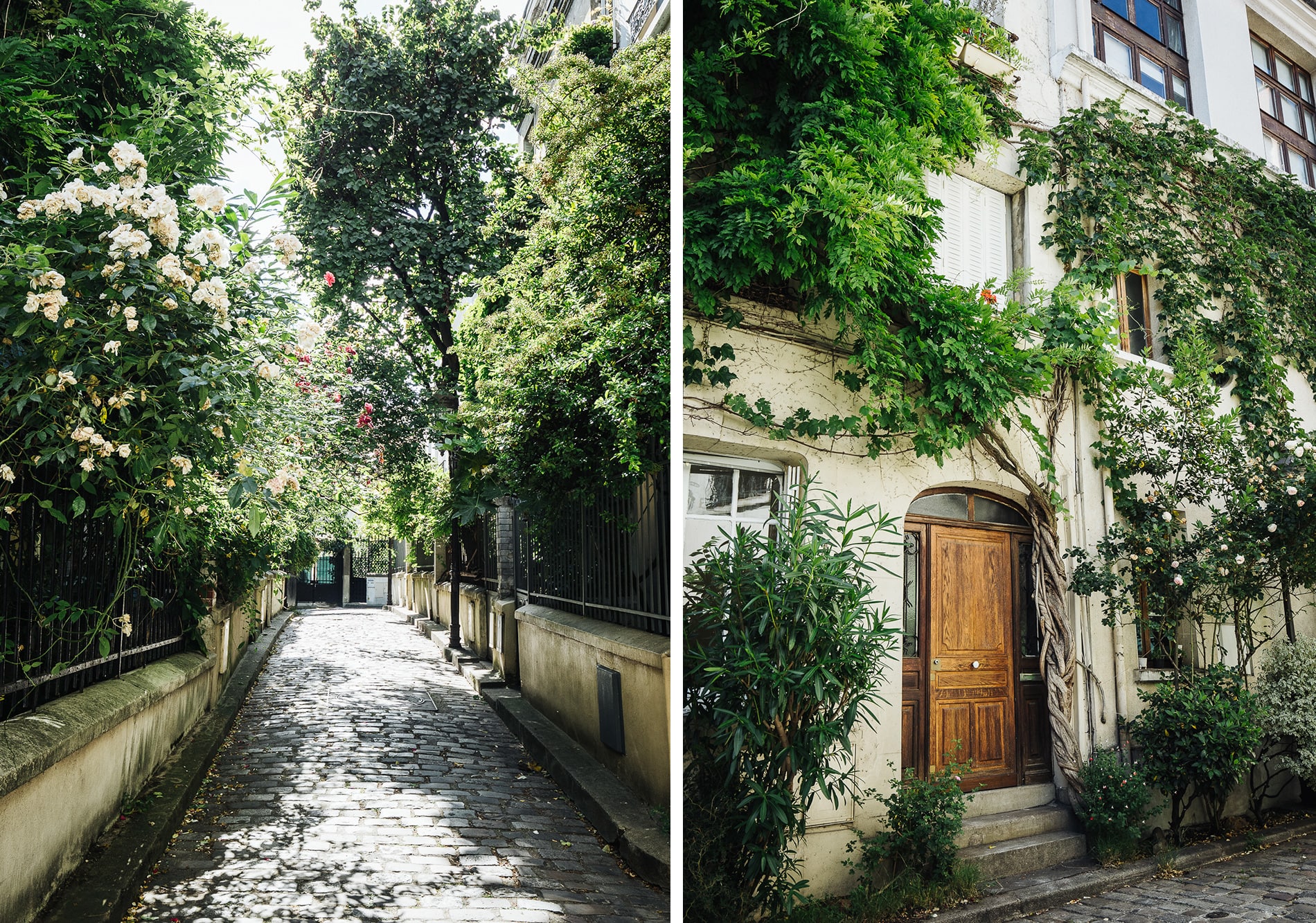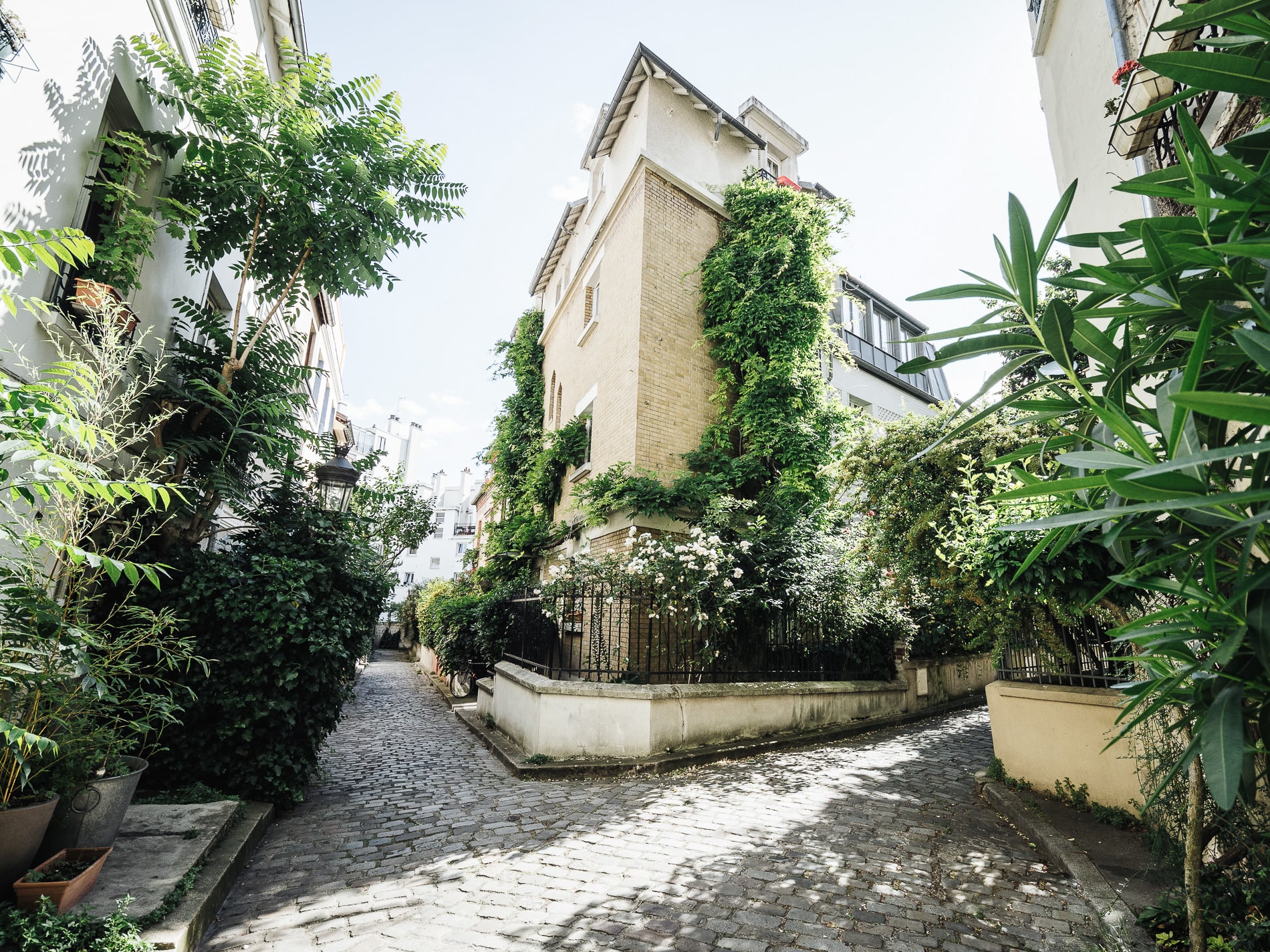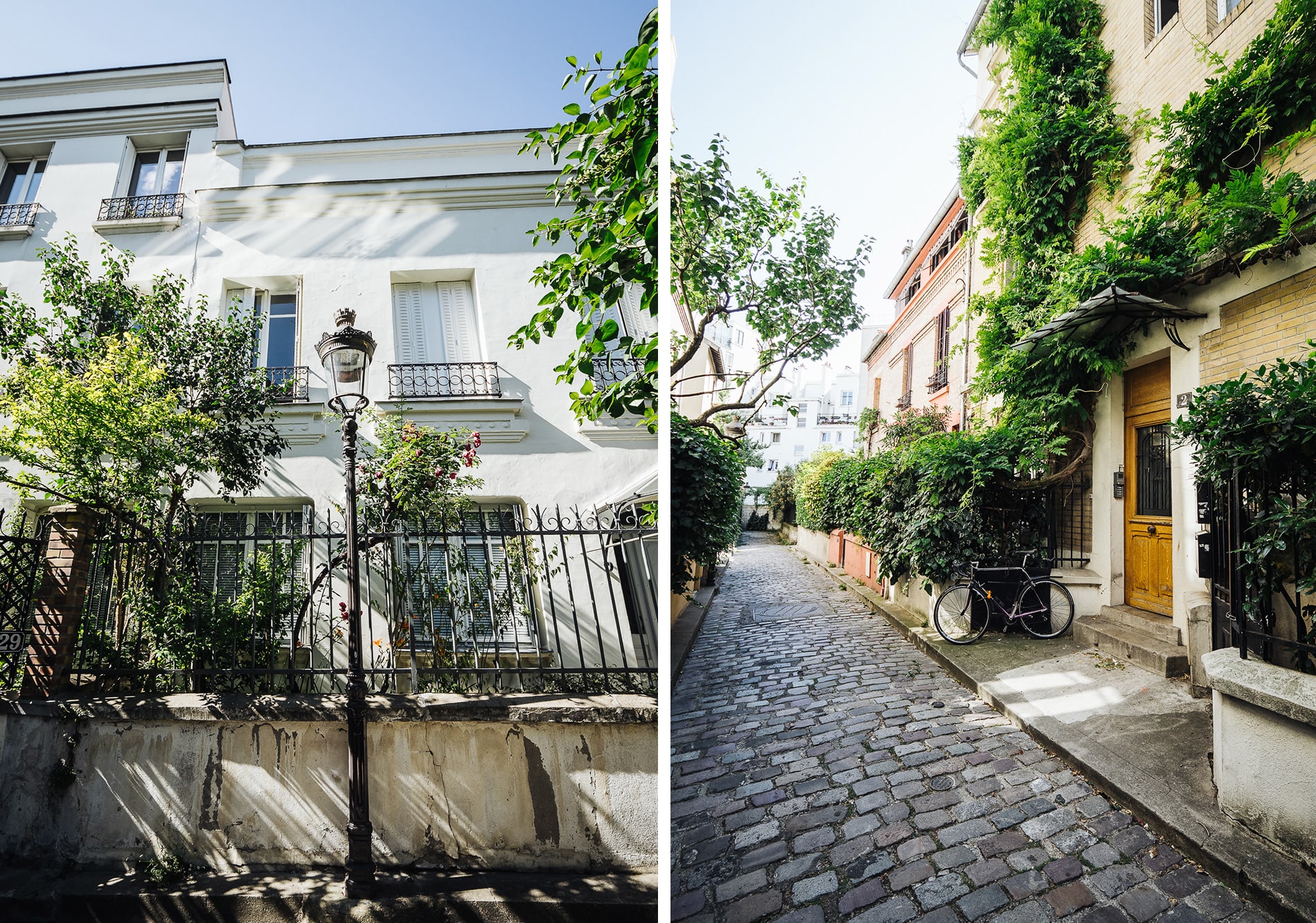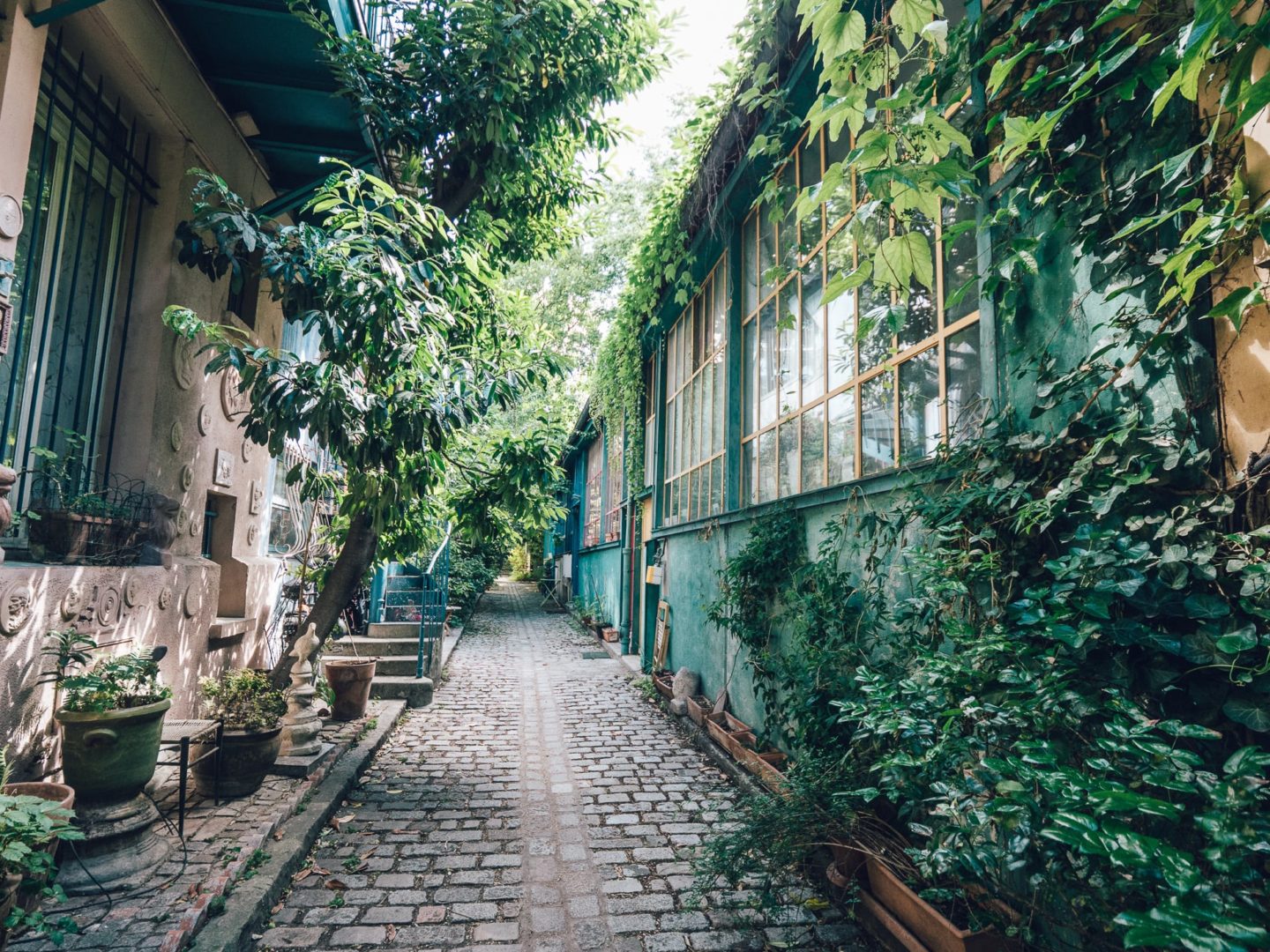
If you’re coming to Paris for the weekend, I’d like to suggest a different way of discovering the city under a beautiful sunny sky. Paris’s unusual alleyways are still little-known to tourists, but we’d like to share some of these well-hidden treasures with you.
After a stroll through the unusual alleys of the Right Bank, we’ll take you south of Paris to the Left Bank to discover other charming alleys that are sure to give you a change of scene!
In fact, we’ve written several articles about the capital:
- How to discover the 18th arrondissement in an unusual way
- The unusual and secret streets of the Right Bank
- Unlicensed boat trip on the Canal de l’Ourcq
- 5 stylish Parisian addresses to make the most of summer
Paris’s unusual alleyways are a great place to take a stroll as soon as the warm weather arrives. They’re rarely visited by Parisians and tourists alike, yet these alleys have a charm all of their own that makes you see Paris in a different light. Don’t forget to bring your camera, as you’re sure to be drawn in by the flower-filled facades and bucolic gardens.
TABLE OF CONTENTS :
Les Ruelles insolites, on the left bank of the capital: 13th, 14th and 15th arrondissements of Paris
| THE LITTLE BELT OF THE 15th CENTURY (75015)
The 15th arrondissement’s “petite ceinture” is a former 36-km railway line around Paris built during the Second Empire (1852-1869) to link Paris stations. Today, the line is no longer in use and the vegetation has gradually taken over, creating habitats suitable for small wildlife. This unique site, built in places above the Vaugirard plain, is a pleasant place to stroll and offers original views over the city. This 1,300-metre walk is open weekdays from 9am and closes at 8:30pm on sunny days (May to August).
| VILLA SANTOS DUMONT (75015)
Villa Santos-Dumont is a very pretty, open and accessible thoroughfare in the 15ᵉ arrondissement of Paris. The nearest metro stations are Vaugirard and Plaisance. It’s a peaceful, bucolic lane where many artists have lived. Among others, the painter Fernand Léger and the sculptor Ossip Zadkine lived here, and a stone’s throw from the lane is the former home of Georges Brassens (rue Santos Dumont). There are some beautiful Norman-style residences, in contrast to the Haussmannian architecture of the capital, colorful flower gates, planters galore, bicycles and, when we were there, an old Beetle parked here to our delight. For a moment, forget the hustle and bustle of Paris and enjoy a change of scenery!
| RUE DES THERMOPHILES (75014)
Rue des Thermophiles is surely one of Paris’s best-known unusual streets, along with Cité du Figuier on the Right Bank. Here you’ll find old workers’ houses and facades lined with ivy and wisteria in bloom. The colorful doors sometimes remind us of Italy or Provence. This alley is very quiet and unaffected by the noise of the adjacent street. At the end of the street is the Giacometti square and the Bauer housing estate, with a few shady corners. The nearest metro station is Pernety. For the record, this street takes its name from a narrow passageway and strategic point in ancient Greece called Thermopylae, literally “the hot gates”.
| CITE BAUER (75014)
It’s a tiny lane next to Rue des Thermophiles and Square Giacometti. There’s nothing extraordinary about it, apart from the heart-shaped wrought-iron and wood gate at number 19, the most charming in Paris. You want to knock on their door and enter their private garden. A woodcarver of Hungarian origin, Alexandre Mezei, who lived here in the 1950s, was responsible for this unique work in the capital.
| SQUARE DE MONTSOURIS (75014)
The Square de Montsouris, another of Paris’s bucolic nuggets. You’ll have to go to 12 rue de Nansouty to stroll through this charming alleyway, which has attracted many artists. This private residential driveway, barely 200 meters long, is nevertheless lined with some sixty characterful townhouses built in the early 1920s. It’s a mix of styles, with art deco buildings and facades covered in wisteria and ivy. The nearest metro station is Porte d’Orléans.
| CITE FLEURIE (75013)
La cité fleurie is a collection of around 30 artists’ studios built in 1878 using materials from the dismantling of the Universal Exhibition, located between 61-67 boulevard Arago and rue Léon Maurice Nordmann. At the beginning of the 20th century, many famous artists such as Rodin and Paul Gauguin lived here… a dream come true! From the outside, you can’t imagine for a second what awaits you inside. And it was only once we were inside that we realized that this city is first and foremost a private dwelling. The Cité Fleurie is gated, so you’ll have to wait patiently for someone to open the door for you, or coax the children who play just outside. It’s so quiet and exotic around here, we’d love to live here. In this little haven of peace, you’ll find rattan furniture with a patina of age, antiques, flower gardens, bicycles scattered here and there, cats and local residents relaxing on their terraces.
| GREEN CITY (75013)
As for La Cité Verte, it’s another big favorite, because you’d never guess that this little cul-de-sac exists behind that huge black gate locked by a digicode. It’s another artist’s quarter, located at 147 rue Léon Maurice Nordmann, and I think it’s one of Paris’s best-kept secrets. You’ll have to put on your best smile to open the doors to this little hidden paradise. I loved it because you feel like you’re walking through a lush forest, away from noise and glare. The nearest metro station is the Glacier metro station.
| VILLA DAVIEL (75013)
Villa Daviel is a charming cul-de-sac named after Jacques Daviel (1696-1762), Louis XV’s physician and the first surgeon in France to perform successful cataract surgery. These dwellings were once used for social housing, but today they’ve earned their rightful place in the hearts of wealthy Parisians. Meet at 7 rue Daviel, Corvisart metro station.
| LA PETITE ALSACE (75013)
On the Butte aux Cailles side, opposite the Villa Daviel, lies the Petite Alsace also known as Cité Daviel. You won’t want to miss it, with its half-timbered facades reminiscent of Alsatian hamlets. It’s very difficult to get in, as the entrance (well, the little blue gate) is protected by a digicode, but with a little patience, you can wait for a local to open the door for you. The locals aren’t too keen on people strolling through here, as this pretty, flower-filled courtyard is home to social housing. It’s a really beautiful place, with 40 half-timbered terraced houses and a lovely tree-lined courtyard. For a moment, we’re teleported to Alsace. If you manage to get in here, be aware that you won’t be able to get past the last mailboxes. In a similar vein, and not far from Petite Alsace, you’ll find Petite Russie, but I must confess I couldn’t get in!
| CITE FLORALE (75013)
We also love the floral city. This housing estate is truly a hamlet of small, colorful houses not far from the Square de Montsouris. It’s unique in that it gives you the feeling of being transported away from Paris to a small village in bloom. There are 6 cobbled lanes, each named after a flower (rue des Glycines, rue des Orchidées…) and all the houses are superbly maintained, some with flower gardens. Special mention for the one with the pink facade: for a moment, I thought I was in a pretty square in a beautiful French village. Allow 30 minutes maximum to walk around the block. To get there, go to Rue des Orchidées.
| POPLAR SQUARE (75013)
I really liked Poplar Square because it’s not immediately visible and a bit hidden from the main arteries. It’s green, colorful and bucolic, forming a loop with a central residential island. You don’t want to get lost and play hide-and-seek in this small street barely 140 meters long and 3 meters wide. All houses have a small garden with a small, often high, iron gate. There are also a few street lamps that take us back to a time when Paris was lit by gas. To discover this beautiful cobbled street, simply go to 68 and 72 rue du Moulin-des-Prés, not far from rue de Tolbiac (Tolbiac metro station).
Tell me what’s your favorite of all these unusual alleys? Which street or cul-de-sac appeals to you? Leave us a message to let us know if you enjoyed these walks. You’ll love Paris as soon as the warm weather arrives.
